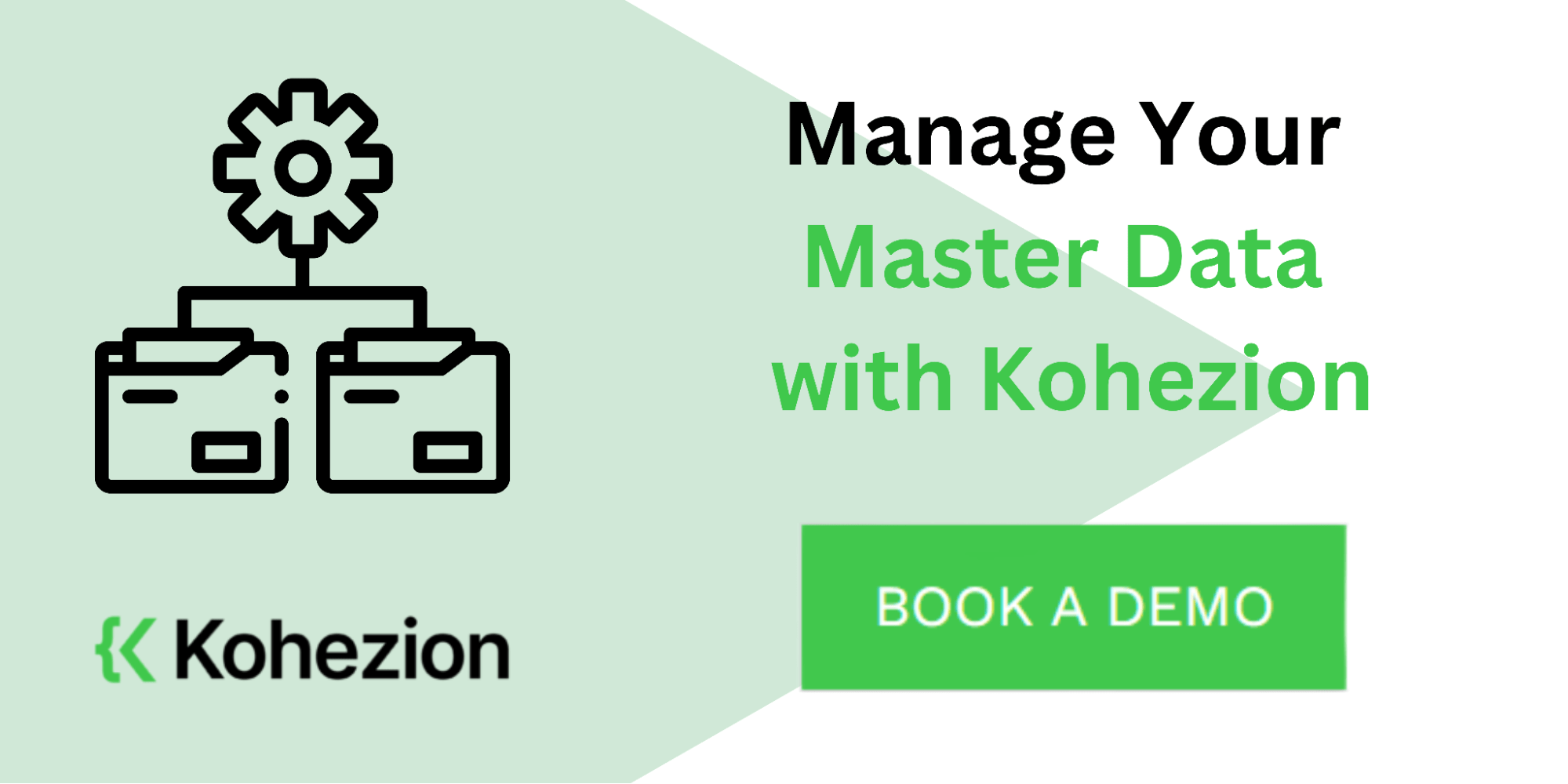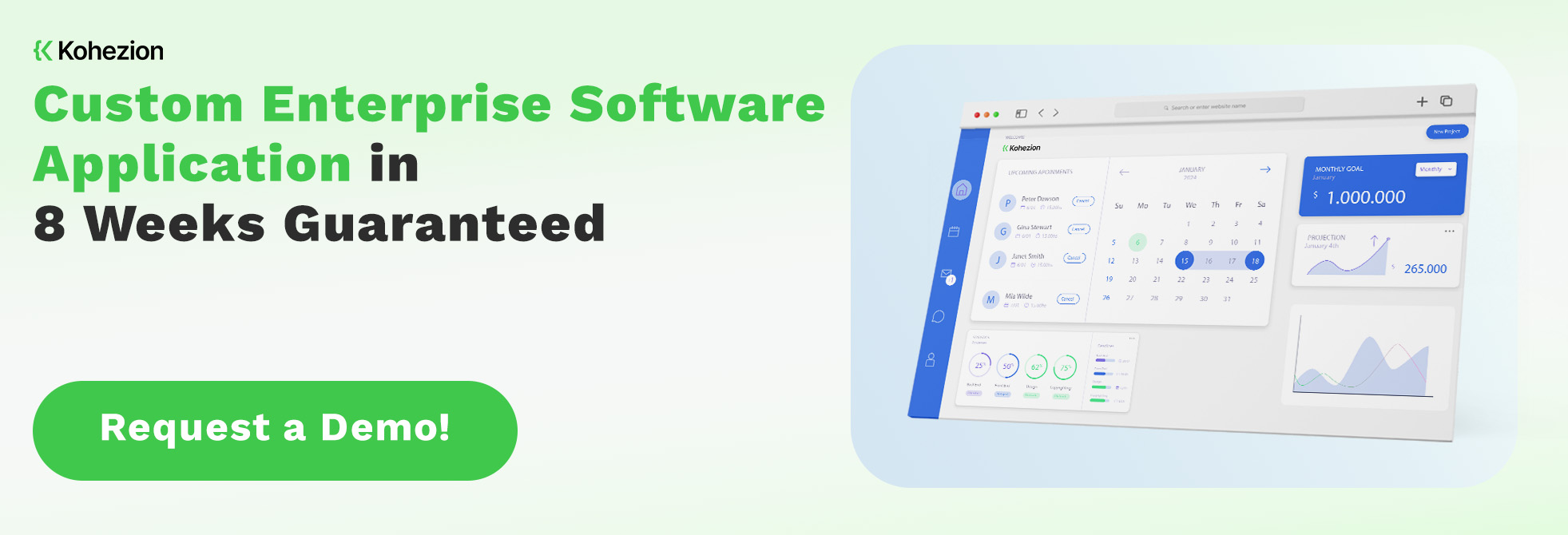Managing hardware assets is crucial for keeping things running smoothly. However, research showed that about 33% of companies have a reactive approach to hardware asset management. This kind of reactive approach goes against what asset management is all about, which should be helping companies see ahead and stop issues before they happen.
The United States is set to see big growth in hardware asset management, with predictions saying it could reach $23,277 million by 2034. So, it's clear there's a lot of room for improvement and a big opportunity for businesses to get it right.
This post explains hardware asset management and its benefits and shares tips on how to manage your hardware assets effectively.
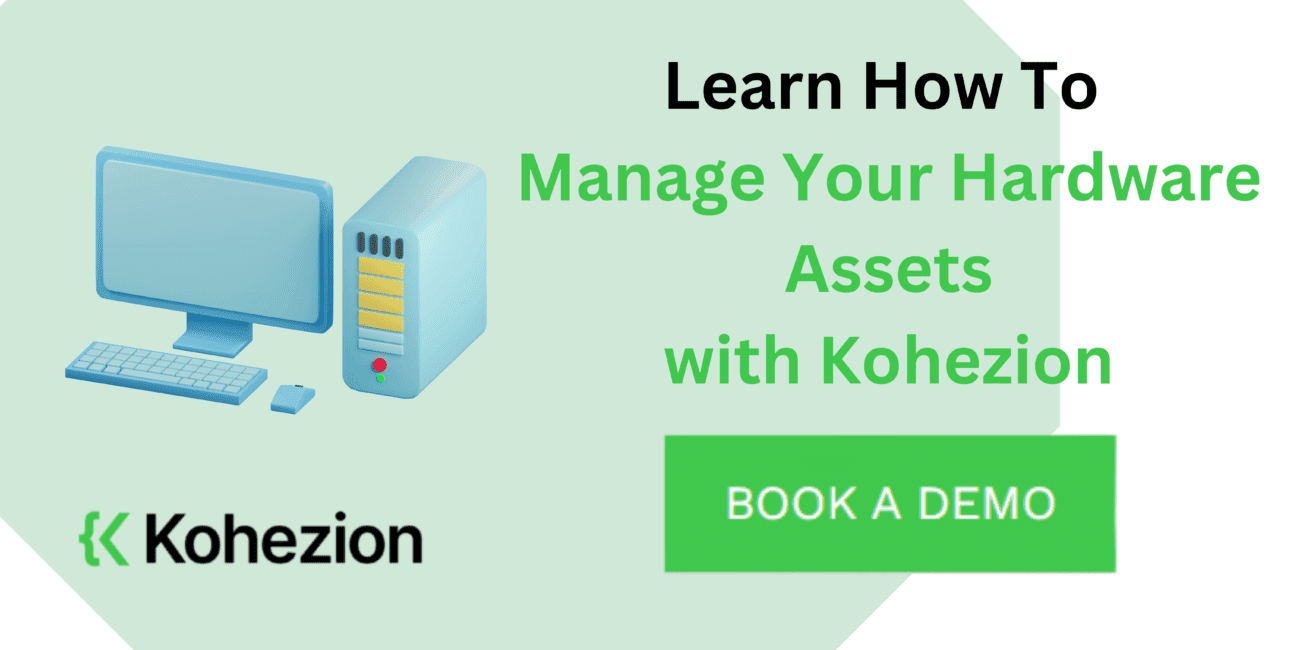
What Is Hardware Asset Management?
Hardware asset management (HAM) is a systematic process dedicated to managing your IT hardware assets effectively. It involves keeping track of where each piece of hardware is within its lifecycle, from the initial purchase to the final disposition.
It's about understanding your assets’ conditions, configurations, locations, and impact on your business's productivity and financial planning. This includes laptops, desktop computers, servers, or networking devices. Each asset is meticulously cataloged and monitored to ensure peak performance and cost-effectiveness for your organization.
Why Is Hardware Asset Management Important?
Hardware asset management directly impacts business factors like productivity, financial stability, and security. Properly managing hardware assets equips your organization to direct resources where they are most needed, ensuring that no investment goes underutilized or overlooked. This increases efficiency and ensures your business is responsive to changing markets.
HAM also extends the lifespan of assets with proper upkeep, delaying costly replacements and maximizing the value derived from every piece of equipment. It helps reduce overhead expenses linked to unexpected repairs, downtime, or underutilization of assets.
Proper hardware asset management streamlines processes, enabling your team to do more with fewer bottlenecks due to hardware issues. It also improves asset visibility and security, which means that you always know how your assets are performing or who is using them.
What Does the Hardware Asset Lifecycle Look Like?
Understanding the hardware asset lifecycle gives businesses a clear roadmap for managing their equipment. Here’s what it looks like:
Procurement/Requesting
Procurement or requesting starts with identifying the need for new hardware and ordering the right assets. The first step is to select a vendor and product and then navigate through the procurement system to approve and source the request.
Be clear when detailing hardware specifications. Understand your needs and what vendors can provide. Assess compatibility with other assets, warranties, and technical support. Ensure the vendor can stick to a Service Level Agreement (SLA).
Think about the budgeting side as well. Detail out the financial means that can be allocated to these assets and ensure that spending aligns with the company's financial framework.
Deployment/Implementing
After buying hardware, it's time to give it to the people who need it. This means setting it up with the right software and settings, making sure it follows company rules. Then, you have to send the hardware to where it's supposed to be, like the office, server room, or to remote workers.
For individual users, this could mean setting up their computers at their desks or letting them pick up their devices from a certain spot. You might also give them passes so you can track where the hardware goes or have them sign rules about how to use it.
Dealing with company hardware is a bit more complicated. You have to remove it from storage and use special tactics to manage changes. IT experts then fit the hardware into the live system and make sure everything works right. They also start processes to check if everything is ready to use.
Each piece of hardware gets a tag so you can find it later and ensure it works properly. This helps keep track of everything and makes sure it does what it's supposed to, making things run smoothly.
Maintenance/Monitoring
Proactive monitoring helps you spot problems before they get bad, so monitor your hardware regularly. IT experts or vendors perform scheduled maintenance according to your service agreements. These check-ups find possible problems, update software, and improve performance.
Then, there's reactive maintenance. This is when something unexpected goes wrong with your assets. Your hardware management system notices this and moves fast to fix it.
Keeping your software updated and patching it helps keep your digital business safe and running smoothly. And managing finances ensures there are no bad surprises when it's time to report finances.
Support/Assistance
Support and assistance ensure that users can work efficiently. When users encounter problems with their hardware, support teams step in with their expertise to solve issues.
Users can report problems through different channels, such as helpdesks or emails, and IT support responds promptly, using remote tools if needed. Structured response plans and service level agreements ensure problems are managed effectively and on time.
Assistance also involves providing training and resources for self-help, reducing downtimes. Engaging with users and gathering feedback helps organizations improve processes and tailor hardware procurement to user needs. Effective support and assistance in hardware asset management reduce frustration, increase user satisfaction, and increase productivity.
Retirement/Disposal
Retiring and disposing of hardware marks the end of its journey in your organization. Like procurement, this phase should be approached with care.
Hardware may retire because it's old, obsolete, or can no longer keep up with operations. When it's time to decommission it, the first step is to make sure all data is completely erased so sensitive information can't be retrieved. This often requires special software or services.
After that, you have different options for what to do with the hardware. If it's leased, you follow return procedures to send it back. If there's still some value left, selling it to second-hand markets or refurbishing it can earn some money back and promote sustainability. Some organizations choose to donate hardware to schools or charities as part of their social responsibility efforts.
Whichever path you choose, update your records carefully to keep track of everything. Proper retirement and disposal practices help protect against data breaches, support environmental responsibility, and maintain your reputation as a secure and responsible organization.
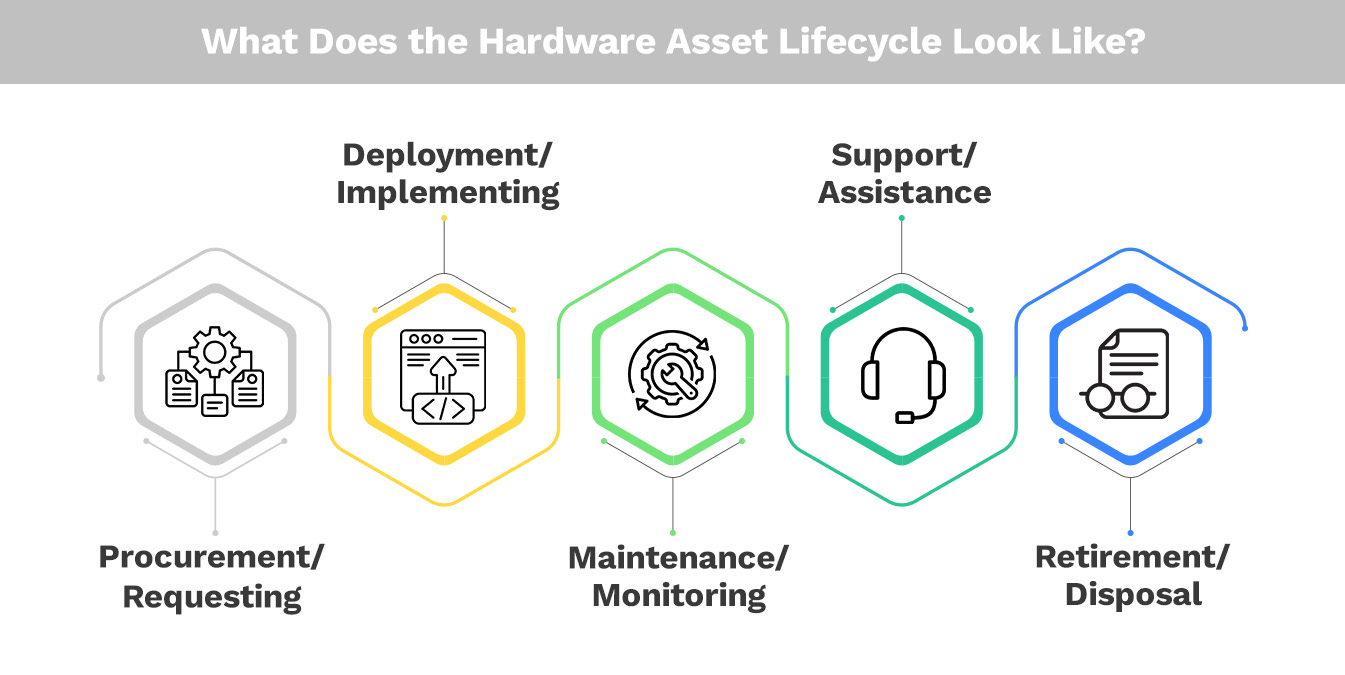
Benefits of Hardware Asset Management
Hardware Asset Management brings several advantages to businesses, simplifying tasks and improving efficiency.
Improved Asset Utilization
Better asset utilization means every piece of hardware in your business is actively contributing rather than just sitting around. This can mean devices last longer or can be repurposed for different tasks. Each asset works to its fullest, making sure no money spent on hardware goes to waste.
Actively managing and deploying assets where needed reduces unnecessary duplicates. Regular maintenance keeps systems running well for longer, meaning you don't have to buy new hardware as often. Proper hardware use ensures that important business functions always have the right support. Well-maintained assets can adapt as your business grows, making it easier to expand.
Cost Savings
Saving money is one of the top benefits of good hardware management. Keeping track of how you use and care for your hardware can help you stop unnecessary spending before it happens.
Keeping close tabs on your hardware helps you avoid spending too much on extra assets and take advantage of discounts when buying in bulk. Regular maintenance makes your hardware last longer, meaning you don't have to buy new assets as often. Efficient hardware also uses less energy, and getting rid of old, energy-consuming devices can save a lot on power bills.
Understanding how long your hardware lasts helps you plan when to upgrade so you can get the best deals. Knowing exactly what you have and what you need helps you sell off things you don't use, saving even more money.
IT Inventory Control
With clear visibility of your assets, you can easily find any piece of hardware whenever you need it. Keeping your records up to date ensures you always know what's going on with each asset. Knowing what's available and what needs attention makes managing your assets easier for your IT team.
Having all your asset information handy makes audits quick and easy, so you can keep track of everything accurately. You can also spot equipment that's not being used much and move it where it's needed more.
Improved Security and Lower Governance Risks
When you know exactly what hardware you have, where it is, and who's using it, you can prevent many problems before they even start. Tight control over who can use your hardware helps prevent unauthorized access that could lead to security issues. Following the rules and regulations in your industry is easier when you track and manage your assets properly.
Monitoring your hardware in real time allows you to quickly notice if something's not right and fix it before it becomes a big problem. Disposing of hardware safely and managing hardware that has important information on it helps protect sensitive data. This helps reduce the chances of losing or having your assets compromised, which could save you a lot of money and protect your reputation.
Loss Prevention
Preventing loss means ensuring nothing goes missing, gets used the wrong way, or doesn't follow its plan. This can save you a lot of money and protect your company's investment.
Making sure each item is assigned to a person helps everyone know who's responsible for what, making people more accountable. Using GPS or barcodes helps you know exactly where your hardware is at all times.
Setting up alerts for anything unusual, like hardware being in the wrong place, helps prevent problems before they worsen. Regular checks also help you find missing items early on so they don't stay missing for long or get stolen.
Keeping good records helps speed up insurance claims or help you find lost stuff more easily. But keeping such a close eye on things means spending money on tracking systems, which might make people feel like they're being watched too closely if you're not open about it.
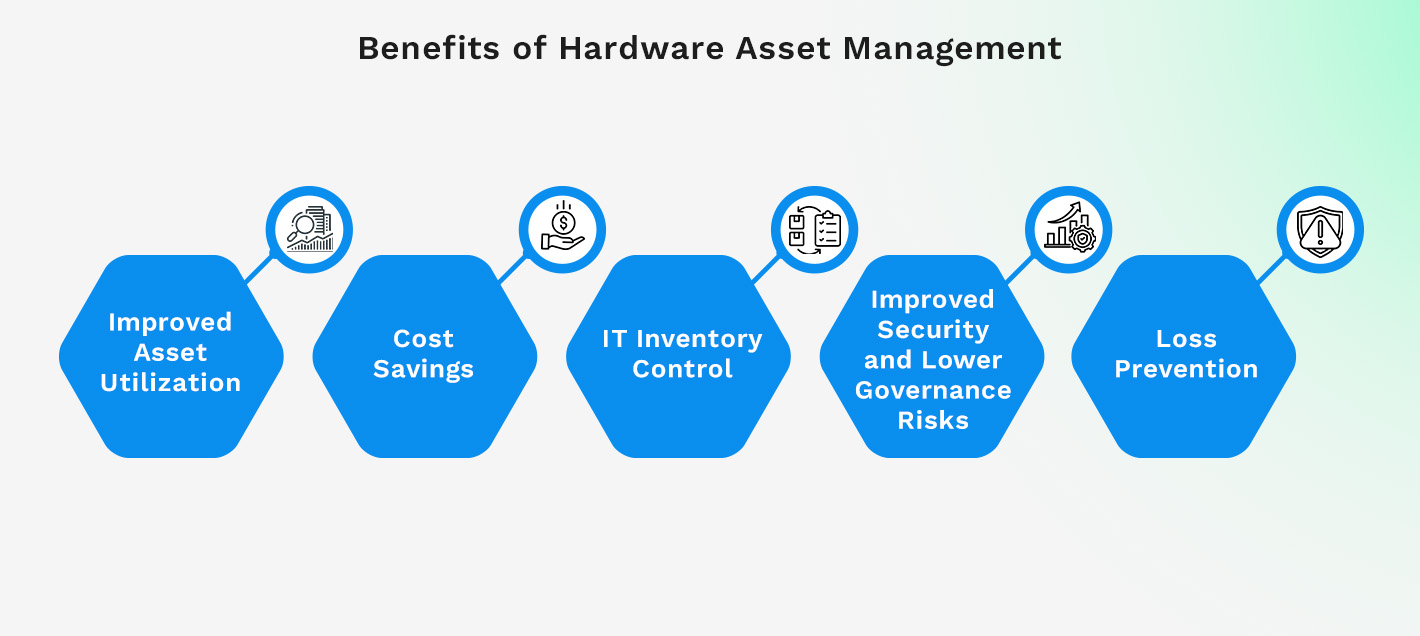
Challenges of Hardware Asset Management
Managing hardware assets comes with its fair share of challenges. Here are the most notable ones:
Disorganization
The biggest challenge that HAM addresses is the lack of an organized hardware asset inventory. Without an inventory, organizations don’t know what exists within their IT environment, who is accountable for assets, or how they're maintained.
Disorganization can lead to numerous issues, such as misplacing or losing assets, unanticipated shortages or surpluses, the inability to allocate resources effectively, and difficulty tracking asset performance and maintenance needs.
Some organizations try to address this problem with simple spreadsheets or homegrown tools, but most find it difficult to maintain proper asset management records without purpose-built solutions.
Manual Inventory Management
Manual inventory management relies on spreadsheets and physical checks. It is a time-consuming process prone to human error and can become difficult for organizations with growing inventories.
Difficulties with manual inventory management often include errors in data entry, challenges in tracking asset lifecycle updates in real-time, delays in accessing and reporting asset information, and increased workloads for IT staff.
Adopting automated solutions like barcode scanning or RFID tags can turn a tangle of spreadsheets into a smooth, real-time tracking system, improving the efficiency and accuracy of your hardware management.
Changes and Obsolescence
Changes and obsolescence are big challenges in hardware asset management because technology moves quickly. What's new today could be old tomorrow, so it's important to know when to upgrade or remove old hardware.
This means regularly checking if your hardware is still useful and works well. Keeping old equipment around can slow down your organization, and old hardware that doesn't get updates anymore could be a security risk. To deal with these challenges, organizations need to be flexible and ready for what comes next in hardware management so that they can stay on track even as technology changes.
Inadequate Budget Planning
Since technology costs a lot, plan carefully to avoid spending too much or not enough on hardware. If you don't plan your budget well, you might rush to buy important hardware at the last minute or use old stuff that no longer works. Not thinking ahead can also mean missing out on good deals or tax breaks when buying hardware.
But if you plan your budget carefully, considering how much everything will cost over its lifetime and whether you can sell it later, you can ensure your hardware spending matches your business needs and goals.
Service and Support Issues
When hardware breaks or doesn't work well, getting quick and good support keeps everything running smoothly. Without the right service agreements or dedicated support, organizations can lose a lot of time and money because they can't work properly.
Common support problems include waiting too long for help, not planning for hardware needs, and having trouble fixing or replacing things because of bad vendor management or unclear warranties.
To fix these problems, organizations must make clear agreements with their service providers and manage relationships with reliable vendors. A good support system means training employees to prevent problems and having help available when things go wrong, like a helpdesk or technicians who can come to your workplace.
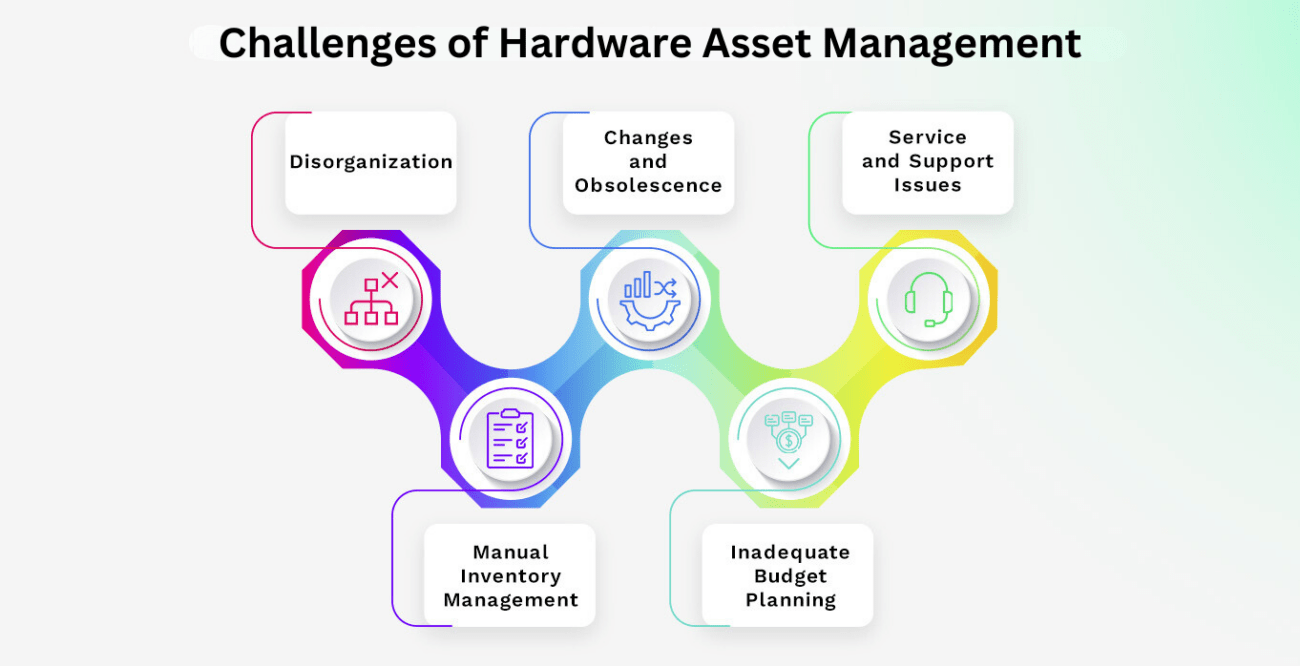
Best Practices for Hardware Asset Management
Following best practices ensures that businesses can maximize the value of their equipment while minimizing risks and costs.
Establishing, Strategizing, and Planning the Process
Establishing, strategizing, and planning the process creates a sustainable system that syncs with your business goals.
- Establish a baseline inventory: know what you have, where it is, and its condition.
- Consider the entire hardware lifecycle, planning for procurement, deployment, maintenance, and disposal.
- Implement governance structures: decide who’s responsible for each step and establish accountability.
Planning can help prevent problems down the road. It's critical for organizations that want to maintain control over their IT assets, protect their investments, and ensure that their technological backbone is responsive to their needs.
Integrating Hardware Asset Management into All Functions and Departments
Integrating HAM into all functions and departments helps you achieve a holistic view and control of your assets. This integration ensures that everyone understands their role in the lifecycle management of hardware assets.
- Ensure that HAM policies and processes are accessible and understood by all relevant departments to promote collaboration.
- Foster a culture where HAM is seen as part of the broader organizational strategy, rather than a siloed IT responsibility.
- Use cross-departmental liaison roles or committees to ensure that HAM considerations are included in decision-making across the business.
Utilizing Real-Time Insights to Make Informed Decisions
Harnessing the power of real-time insights allows your organization to make swift and informed decisions. The ability to respond to live data can give you a significant competitive edge.
- Use dashboard analytics to monitor hardware health, utilization, and performance issues as they happen.
- Act quickly on real-time alerts for maintenance needs or security concerns, preventing bigger issues down the line.
- Make strategic decisions based on current hardware usage trends, preparing your business to adapt to changing needs.
Leveraging real-time insights caters to organizations with dynamic environments that require rapid decision-making to ensure business continuity and efficiency.
Manage Your Hardware Assets with Kohezion
Kohezion is a comprehensive solution that eases the complexity of asset management. Imagine having all your hardware assets organized, tracked, and managed from a centralized platform with intuitive tools at your fingertips.
You'll experience seamless integration into your existing systems, improving tracking and management efficiencies. Kohezion offers a range of features, such as detailed asset tracking and records, customizable reporting, and automated alerts for maintenance and lifecycle events.
Whether you’re a small business or a multinational enterprise, Kohezion ensures that your hardware assets always add value.
Conclusion
Effective hardware asset management ensures your organization's equipment works smoothly and efficiently. Each piece of hardware reflects your business's health. Manage them well, and they'll perform reliably. Neglect them, and you might face unexpected issues.
Good practices lead to better use of your assets, cost savings, and easier inventory control. Tools like Kohezion can make the process manageable. Contact us today, and let us help you navigate hardware asset management successfully.
Start building with a free account
Frequently Asked Questions
An effective Hardware Asset Management program is defined by its ability to track and manage IT hardware assets throughout their entire lifecycle. It should improve decision-making, optimize asset utilization, contribute to cost savings, and ensure compliance with relevant regulations.
Hardware Asset Management ensures optimal use of IT resources, prevents downtime, saves costs, and helps with planning upgrades strategically. It provides data-driven insights for informed decision-making, improving business performance and success.
Yes, small businesses can significantly benefit from Hardware Asset Management. It helps them to maximize the value of limited resources, minimize unnecessary expenses, and improve productivity.
HAM focuses on tracking and managing physical IT assets such as computers and servers. On the other hand, SAM deals with managing software licenses and compliance within the organization, ensuring the legal use of software assets.
Hardware Asset Management (HAM) is a subset of IT Asset Management (ITAM). While ITAM covers all IT assets, including software, HAM specifically deals with the physical components of technology within an organization.
